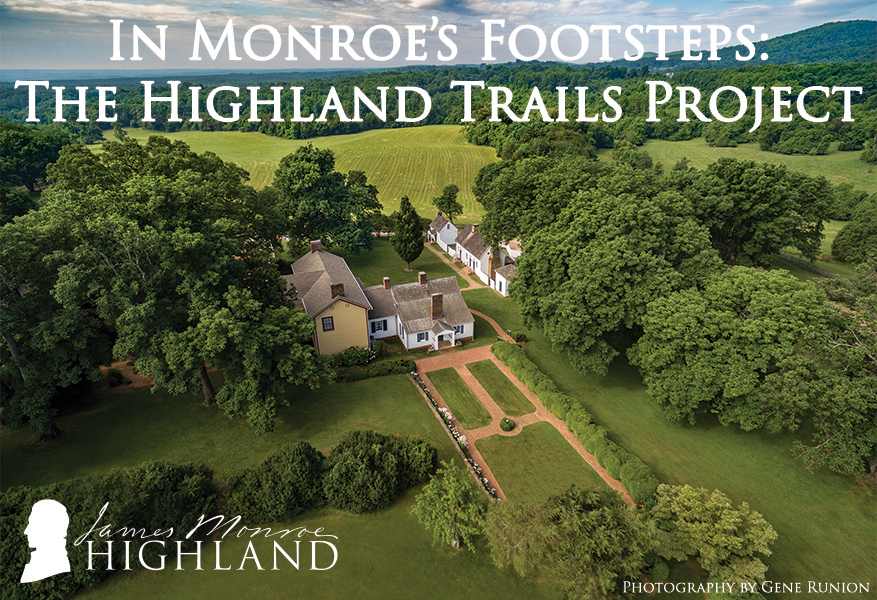
[otw_shortcode_button href=”https://www.givecampus.com/schools/WilliamandMary/the-highland-trails-project” size=”medium” icon_position=”left” shape=”radius” color_class=”otw-blue” target=”_blank”]DONATE NOW![/otw_shortcode_button]
James Monroe’s Highland, home of the fifth U.S. president, is the western outpost of William & Mary. It is a historic site where recent research has overturned our understanding of one of William & Mary’s most notable alumni. To enhance our offerings and build a diverse community around hiking, and historical ecology, Highland has created a set of rustic trails to invite visitors to experience the 535 acres of historic landscape: rolling hills, creeks, pastures, and woodland that lie beyond the site’s core. The system of hiking/walking trails invite visitors of all ages to enjoy outdoor recreation while exploring the presidential site. These trails will eventually connect to nearby historic sites and the City of Charlottesville, with the possibility to engage a large supportive audience drawn to this recreational offering.
The historic and ecological elements that will be interpreted on the trail signs include observations of current landscape features and their historic significance. For example, we might identify current trees, and outline the role of timber harvesting during Monroe’s ownership of the property in a brief text. A historic road might be marked with anecdotes of Monroe and Jefferson riding between their adjacent properties. The source of a stream high on the hillside could allow us to interpret a sawmill and gristmill that Monroe had powered by the water that eventually ran strong through the flat land. These elements all act as invitations to visitors to see past the present and into historic uses of the landscape.
We seek support to build a trailhead kiosk offering maps and interpretive information, and signs along the trail offering gems of information about the ecology of the property and historic events and elements of the landscape –bringing to life the people and places that are all but invisible now.
[otw_shortcode_button href=”https://www.givecampus.com/schools/WilliamandMary/the-highland-trails-project” size=”medium” icon_position=”left” shape=”radius” color_class=”otw-blue” target=”_blank”]DONATE NOW![/otw_shortcode_button]
